#golden crownbeard
Photo
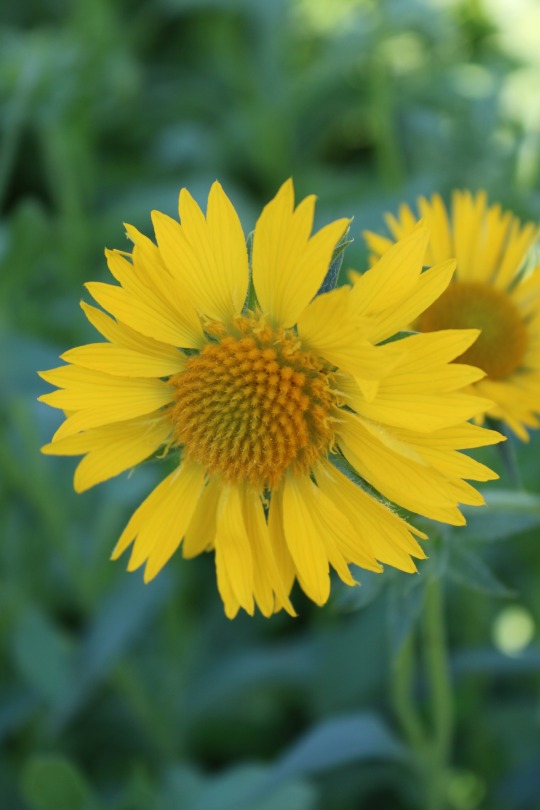
Golden Crownbeard (Verbesina Encelloides)
Toulouse, France
#photographers on tumblr#nature#flowers#yellow#floral#summer#flores#verano#amarillo#golden crownbeard#verbesina encelloides#gold weed#wild sunflower#vertical#original photographers#original photography#cowpen daisy#butter daisy#crown beard#american dogweed#south african daisy
164 notes
·
View notes
Text

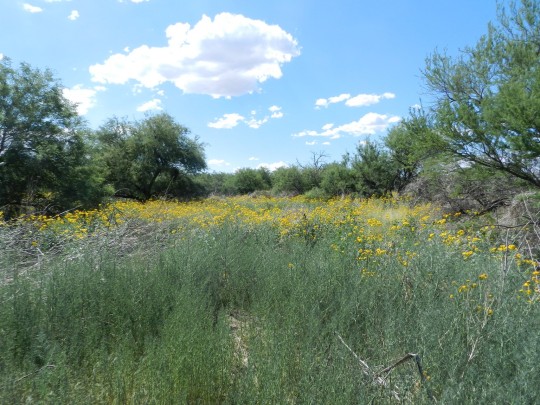
Cowpen Daisies - May 2023
Golden crownbeard, also known as cowpen daisy and officially as verbesina encelioides a a very hardy desert plant that blooms in mid to late May. There were isolated cowpen daisies all over the park, but on the road to the camping areas was a large field of them. Image one is a closeup of one of the blossoms. Image two is the whole field.
MWM
#arizona#tucson az#oro valley az#catalina mountains#catalina state park#golden crownbeard#cowpen daisy#verbesina encelioides
0 notes
Text
Download - Plants
Round 15 -
Golden Crownbeard - mothers historically used this flower in teas to lower fevers and ease cramps. It was also used in cases of malaria, as well as made into a topical paste to treat open wounds and ulcers. The catch to this plant was keeping it away from livestock, as it was toxic to cattle.

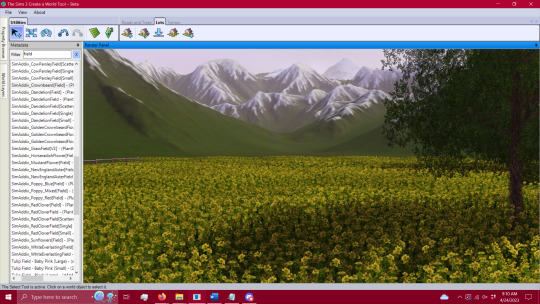

[Notes will be copied to further posts, considering they're all the same facts]
Notes:
These are giant fields. They are meant to fill empty space in CAW/Edit town - you can use them on lots, but as stated they are quite large so if you decide to use them as lot decoration hold onto your hat because they're gonna take up a chunk of ground.
I will be making smaller/single plants to match the fields, but it takes time so please be patient.
These are speedtree plants, so they'll "follow you" when you move around. However consider that any recolors of these plants will become a default replacement unless you make the package unique. So if you would like to recolor them to suit your current world, feel free to, but please make it it's own package so they don't override the original.
These are fairly large but have low polycount - coming in at 330 polys each. That means you can have several of these in one area without weighing down your game too much. That's a win for everyone.
Please feel free to tag me if you use them in your world, I love to see them in your games! <3
98 notes
·
View notes
Note
Hey! I love your blog so much, and I'm so happy that I found it (it's helped a lot)!
I was wondering if you could do a list of flowers that mean (or fall into the category of/are similar to):
Obsession, Obsessive love, 'til death do us part, I want your attention, I belong to you, you belong to me, etc., etc.
Along with this, I'd also like to know what flowers are native to New Jersey (And also which ones bloom in the fall, if any?)
Thank you, and have a lovely day!
That should be possible with some creativity given that obsession and bonding don’t exist as meanings themselves, but it leans well enough into the Victorian flower language to get something out of it still. Hope there’s something in here that works for your story.
arbor vitae – live for me, unchanging friendship
baby’s breath – everlasting love, innocence, pure of heart
bay leaf – I change but in death/dying
broom-rape – union
carnation (pink) – I will/I’ll never forget you, women’s love
cedar leaf – I live for thee
clover (white) – think of me
columbine – I cannot give thee up, folly, desertion
columbine (purple) – resolved to win
cowslip (american) – divine beauty, you are my angel, you are my divinity
currant – thy frown will kill me, thankfulness
daisy (double) – affection, I reciprocate your affection
daphane (rose) – I desire to please
eschscholzia – do not refuse me
euphorbia – persistence
fleur-de-lis – I burn, flame
foxglove – I am not ambitious for myself but for you, a wish, stateliness, occupation, insincerity, youth
furze – love for all seasons/occasions
gladiolus – you pierce my heart, generosity, I’m sincere, flower of the gladiators
heart’s ease – you occupy my thoughts, forget me not, think of me, thoughts
heart’s ease (purple) – you occupy my thoughts
hemlock – you will be my death
honeysuckle – generous and devoted affection, bonds of love, the bond of love, devotion, I would not answer hastily, fidelity
honeysuckle (coral) – the colour of my fate
honeysuckle (wild) – generous and devoted love
japonica – sincerity, symbol of love
jasmine (indian) – I attach myself to you, attachment, separation
laurestine – a token, I die if neglected, delicate attention
mallow (syrian) – consumed by love, persuasion
rose (carolina) – love is dangerous
shepherd’s purse – I offer you my all
spindle tree – your charms are engraven on my heart
tulip – (a) declaration of love, perfect lover, fame, beautiful eyes
tulip (red) – declaration of love
virginia creeper – I cling to you both in sunshine and in shade
Plants native to New Jersey that bloom in fall/autumn:
allegheny monkey flower
american angelica
american arrowhead
american blue vervain
american lotus
american water-willow
ashy sunflower
bigleaf aster
black-eyed susan
bluebell
blue bead lily
blue cohosh
blue mistflower
blue star
blue wood aster
bottle gentian
bowman’s root
brown-eyed susan
bunchberry
bushy aster
canada goldenrod
canada wild ginger
canadian violet
cardinal flower
carolina geranium
caroline redroot
closed bottle gentian
coastal plain joe-pye weed
common boneset
common evening primrose
cow parsnip
crooked aster
cutleaf coneflower
cup plant
downy skullcap
early goldenrod
false aster
false sunflower
field thistle
flat-topped white aster
foam flower
fringed bleeding heart
fringed loosestrife
gayfeather
golden crownbeard
grass-leaved goldenrod
grassy arrowhead
gray goldenrod
great blue lobelia
hairy aster
hardy hibiscus
heath aster
hoary vervain
horizontal calico aster
jerusalem artichoke
joe-pye weed
late boneset
marsh betony
maryland golden aster
maximilian sunflower
meadow phlox
narrowleaf mountain mint
new england aster
new york aster
new york ironweed
nodding lady’s tresses
orange fringed orchid
orange jewelweed
patridge pea
pearly everlasting
pink tickseed
prairie sagebush
purple-head sneezeweed
purple mountain saxifrage
red baneberry
rock harlequin
rough goldenrod
salt heliotrope
sawtooth sunflower
scarlet bee balm
seashore mallow
seaside goldenrod
selfheal
showy black-eyed susan
showy goldeneye
showy goldenrod
showy tick trefoil
slender buch clover
slender dayflower
smooth beggartick
smooth blue aster
sneezeweed
spotted joe-pye weed
stiff goldenrod
stiff sunflower
swamp sunflower
swamp thistle
sweet goldenrod
sweetscent
sweet-scented joe-pye weed
tall boneset
tall cinquefoil
tall goldenrod
ten-petaled sunflower
threadleaf coreopsis
tickseed
virginia meadow beauty
water arum
western sunflower
wild bergamot
wild cucumber
wild potato vine
wild senna
wingstem
white baneberry
white goldenrod
white panicle aster
white snakeroot
white turtlehead
white wood aster
whorled milkweed
woodland sunflower
wreath goldenrod
yellow jewelweed
yellow pond lily
This website gives a breakdown by county in form of excel lists, albeit it doesn’t say whether the plants bloom in fall or not.
https://npsnj.org/native-plants/where-to-buy-natives/plant-lists/
– Mod Jana
Disclaimer
This blog is intended as writing advice only. This blog and its mods are not responsible for accidents, injuries or other consequences of using this advice for real world situations or in any way that said advice was not intended.
https://www.gardenia.net/native-plants/new-jersey
#flower language#gardening#writing advice#victorian flower language#obession#obessive love#feelings of love#attention#you belong to me#I belong to you#mod jana#ask answered
18 notes
·
View notes
Text


Golden Crownbeard - Raccoon River Park, Des Moines, Iowa - August 2021.
1 note
·
View note
Photo

Past Photo Favorites - Golden Crownbeard Flowers cover this field in yellow. This happens every year during the monsoons in August and into September. It is magical sight! FYI, Golden Crownbeard Flowers are also called Cowpen Daisies (if it were up to me I would take a bit from each name and call them Golden Daisies. #PastPhotoFavorites #GoldenCrownbeards #CowpenDaisies #FieldOfYellow #SummerInNewMexico #Memories #SangreDeCristoMountains #AguaFriaNM #Naturalist #PhotoByJeriRae (at Agua Fria, New Mexico) https://www.instagram.com/p/CovKtWpvfxQ/?igshid=NGJjMDIxMWI=
#pastphotofavorites#goldencrownbeards#cowpendaisies#fieldofyellow#summerinnewmexico#memories#sangredecristomountains#aguafrianm#naturalist#photobyjerirae
0 notes
Text
#1756 - Verbesina encelioides - Golden Crownbeard

AKA Cowpen Daisy, American dogweed, butter daisy, gold weed, skunk daisy, South African daisy, wild sunflower, and yellowtop
Australia has plenty of native Asteraceae, but the family is so hugely successful that of course it will have to include numerous weed species. For most of November I was busily involved in the 2020 Biosecurity Blitz, where citizen scientists in Australia report on any suspected invasive species they spot - this annual was one of them.
Originally native to the SW of North America, and down to central Mexico. Now an extremely widespread weed, absolutely thriving where the soil has been disturbed. Roadworks and building sites are certainly covered by the stuff here in Perth. Poisonous to livestock, and poisons the plants around it by secreting allelchemicals into the soil.
1 note
·
View note
Text
New Mexican Plants: Cowpen Daisy

VERBESINA ENCELIOIDES
RANGE: AZ, CA, CO, NM, OK UT, TX, WY.
Bushy, 1–3-feet tall and wide with stout stems and numerous large leaves, this robust plant is covered with gray-green hairs and thrives in disturbed soils. In wet years, it can cover old fields with a blanket of golden flowers. Note the large, triangular gray-green leaves with winged stems, and the narrow phyllaries that spread out beneath the rays.
FLOWER: April–October. Showy 3/4–1 1/4-inch wide (2–3 cm) flower heads bloom on long flower stems (peduncles). The 10–15 orange-yellow, petal-like rays, 1/2-inch long (12 mm), have 3 teeth on the tips and surround a yellow disk. Phyllaries narrowly lance-shaped, hairy, spreading to erect; in a tight bud, they wrap around and extend beyond the enclosed flower.
LEAVES: Lower leaves opposite and triangular; upper leaves alternate and lance-shaped. Blades 1 1/4–3 1/8-inches long (3–8 cm), by 3/4–1 1/2-inches wide (2–4 cm), with course teeth, 3 veins, pointed tips. Blades narrow toward the stem and attach with a winged stem (petiole). A small pair of leaves (stipules) may grow in the leaf axils. Fine, white hairs cover bottom of the rough, dull-green leaves.
HABITAT: Dry, sandy, rocky soils, roadsides, disturbed areas; desert grasslands and scrub, pinyon-juniper, yellow/ponderosa pine-Douglas fir forests.
ELEVATION: 3,000–8,600 feet.
SIMILAR SPECIES: Mountain Crownbeard, V. oreophila, in southern mountains of NM, has mostly opposite leaves. The ray flowers of Plateau Goldeneye, Viguiera dentata, in the southern 2/3 of NM, have a notch instead of 3 teeth and the leaves are on 3/8–3/4-inch long (1–2 cm) stems (petioles) without wings.
NM COUNTIES: Nearly statewide (not reported in Quay Co.) in low- to mid-elevation, dry habitats.
Special Value to Native Bees
Special Value to Honey Bees
This plant was used by Indians and early settlers to treat skin ailments.
Info Courtesy of NM Wildflowers and Wildflower.org
16 notes
·
View notes
Photo


The North American Wingstems, or Crownbeards, come in a few different shapes and sizes. The ones I am most familiar with is the common Wingstem and the tatty crownbeard, Verbesina alternifolia and Verbesina occidentalis, which are fairly noticeable in open woodlands where they are most common. This species above, Verbesina encelioides, is sometimes found in open woodlands but seems to favor meadow like openings in forests where direct sun is the primary lighting. This species gets it’s common name, Golden Crownbeard, from it’s full, golden, sunflower like, capitulum that is much different from the coneflower like capituli of it’s other members. This species is also very important in local grass land communities as it helps slowdown grass spread by preventing germination due to allelopathy.
In the United States, you may have noticed honeysuckle or garlic mustard taking over an area. Their allelopathic tendency is why they can do that so easily, or at least one of the reasons. This wingstem is native to the United States, but in places like India and China it can be a noxious weed.
http://www.nrcresearchpress.com/doi/abs/10.1139/b99-097#.XA6YvHRKjtQ
Note: Most crownbeards will have a pubescent wingstem and appressed hair along the sepals of the capitulum, which is why they were named crownbeard or wingstem.
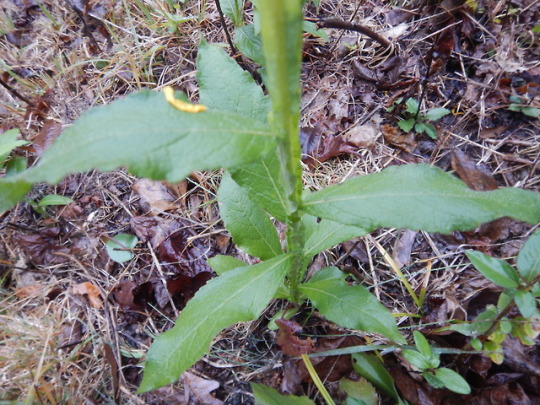
Photographed in early fall in Clifty Falls State Park, Indiana.
#verbesina#asteraceae#botany#plant identification#wildflower#wildflowers#landscape#nature#flower#yellow#flowers#plants#plant#hiking#plantblr#wingstems#wingstem#crownbeard#indiana#verbesina encelioides#prairie#forest#fall#allelopathic#science#agricultural science#invasive species#usa native#plant biology
25 notes
·
View notes
Text
531 words... because ya cant be basic
The predominant recommendation for this report is the use of chemical control to eliminate populations within the Shire of Greater Geraldton, with emphasis being placed on the populations falling along major transport corridors, and those along transport corridors used by farmers. Though there may be numerous populations, it is the ones in high traffic areas that pose the greatest risk when it comes to spreading to creation of new populations. It is also recommended that more public awareness needs to be drummed up in relation to weed control and available methods, i.e.; the creation of media to inform the public of just what is a weed, what the shire is targeting, works being undertaken, and how they can control their own weed populations. The topic needs to be approached delicately as a for many land owners, their land is their livelihood. They already have integrated pest management plans in place, and by strong arming them over the subject it is bound to create needless friction. Another point to be addressed is perhaps the creation of a weed brochure guide, or even a webpage attached to the shire home page that gives people the necessary information, or links to the necessary resources, so they themselves can adopt a management plan that best suits their own lifestyles, abilities, economic positioning, and gives them the power to be proactive in weed control. We are never going to be able to be on top of every population, but by increasing awareness and helping people, you’re greatly increasing the numbers of people doing something about the problem, rather than simply ignoring it and allowing the problem to spread.
Another strategy that could be adopted by the shire in weed management control is the introduction of a “Dob in a weed project”, in the form of an online for or such so that large populations that may not have been documented before can be mapped and planned for. If you truly want the support of the public in such matters, there needs to be a visible presence. This is where the use of social media platforms would be advantageous. If people know of the problem, and see gaining support for such issues being address, weed control becomes less uncool and something more akin to an average, everyday issue. As it is, support for chemical controls has wavered over fears of the long term effects of such chemicals, and their links to conditions such as autism and cancer. Alternative methods should be offered to cater for a wide range of people, even if it’s as simple as adding a hand pulling, or slashing, option in the information provided to the public. It is unfortunate, but Geraldton has a severe weed problem that diminishes from the beauty of the location. More than a few people have muttered grumblings over the overabundance of African Boxthorn, or Verbesina encelioides (Golden Crownbeard), yet don’t realise that control have been put in place, as they don’t see the sites every day. People also tend not to consider that developing and implementing pest control requires time, effort, and money. If this process was talked about in a more public forum, it would greatly help.
2 notes
·
View notes
Text
Midway Atoll: Restoring an Ecological Gem
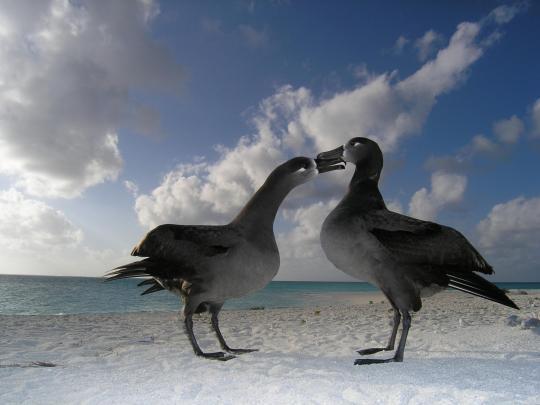
The Hawaiian archipelago is a crucial nesting site and stop over for seabirds that inhabit the subtropics of the Pacific. Photo credit: USFWS
Article by Aaron Ochoa, a public affairs officer with the U.S. Fish and Wildlife Service’s Pacific Region.
One of the furthest islands of the Northwest Hawaiian archipelago, Midway Atoll National Wildlife Refuge is no more than 2.4 miles of ground surface. Since its discovery, Midway has never been a place of simple means or purpose. The original surfaces of Midway’s two islands, Eastern and Sand, were intentionally changed to fit the needs of those living on its sands. Midway continues to change and is currently under another face lift. However, this time the change is not for the sole purpose and benefit of people, but instead, to benefit the island’s habitat and the seabirds of the Hawaiian archipelago.
What does it mean to restore a habitat? Midway’s history and landscape is a collage of human activity and disturbance. The mostly barren Sand Island whose sands and grasses hung above the surface of the water was pulled out even further from the sea. While, perhaps not literally pulled out of the sea, but layers of soil were added and the land mass enlarged. In 1903 the ship Whalen brought 400 tons of soil to Midway from Honolulu along with plants and grass seeds. Surmounting the newly shaped island was a litany of exotic plants, structures and people.
During the 20th century, Midway added new layers of soil, plants and history. From the Commercial Pacific Cable stretching telegraph lines across the Pacific to the U.S. Navy creating an outpost and air facility, Midway was a site of intense socio-ecological change. Video credit: Holly Richards/USFWS
But can Midway be ecologically restored to its pre-contact habitat? Ecological restoration is defined by the Society for Ecological Restoration as the practice of assisting the recovery of an ecosystem that is damaged, degraded, or destroyed. In the case of Midway, this would also include an ecosystem that was transformed into an entirely new habitat.
In 1988, Midway Atoll became an “overlay” national wildlife refuge, still subject to primary jurisdiction of the Navy. However, 1993, Naval Air Facility operations came to an end. As part of the base realignment and closure process, the Navy removed over 100 underground fuel tanks and numerous structures and began the ecological restoration with island wide cleaned up.
Habitat restoration on Midway Atoll National Wildlife Refuge benefits millions of seabirds. Midway provides a safe haven for the world’s largest albatross colony and is home to an amazing variety of wildlife including green sea turtles, spinner dolphins, and endangered Hawaiian monk seals. Video credit: Holly Richards/USFWS
There is no real financial or ecological feasible way to remove all the indelible impressions left behind on Midway. The island consists of a complex and layered landscape where histories merge with the land. Instead of focusing on restoring the landscape to just one definable point in history, the Service is focusing on habitat restoration that promotes native plants and protects wildlife that existed on Midway and throughout the Pacific Islands.
It starts with removing the bad and then planting the hardy. Removing invasive species is always an ongoing project on Midway. Invasive species take up residences quickly and in little time out-compete native plants and wildlife. And invasive species thrive in the welcoming climate of the Pacific Islands. With such an alter environment that consists with so many invasive plants, only the hardest and strongest native plants survive.

Verbesina encelioides (golden crownbeard) reduces water for native plants and chokes up space necessary for seabirds to nest. Fish and Wildlife Service personnel, contractors and volunteers have declared war on verbesina. Today, verbesina is nearly gone and only exist on 1% of the island creating new nesting sites for seabirds. Credit: USFWS
When choosing what native plants to propagate, researchers choose plants with greatest probability of survival and with the highest ecological yield for the ecosystem. In 2016, Fish and Wildlife Service personnel, volunteers and contractors undertook the largest out-planting on Midway. Some 780 pots of native bunchgrass and 300 pots of 7 other species that will help restore the habitat. With each success the habitat becomes more and more favorable for seabirds and other wildlife.
The ecological restoration of this refuge manages to keep a sense of its past while looking forward to the future. During the last 100 years, Midway has always yielded to what was best for the people living on the island with little focus on the countless native wildlife that also depends on its resources. Today, Midway is now a refuge and ecosystem that serves seabirds, shorebirds and marine mammals.
Read and learn more about Midway Atoll at:
A Future to Count on for Albatross at Midway
Discovering Midway’s Cultural History
A Laysan Lovesong
War and Peace at Midway Atoll
Ready for a tour of Midway Atoll? Discover some of Midway’s major features, monuments with “Exploring Midway Atoll” story map.
#midway#Midway Atoll#battle of midway#Midway Atoll NWR#ecology#habitat restoration#seabirds#birds#wildlife#National Wildlife Refuge#refuge#wildliferefuge#nationalwildliferefuge#Fish and Wildlife Service#USFWS#FWS#pacific#Pacific Ocean#pacific islands#hawaii
307 notes
·
View notes
Photo
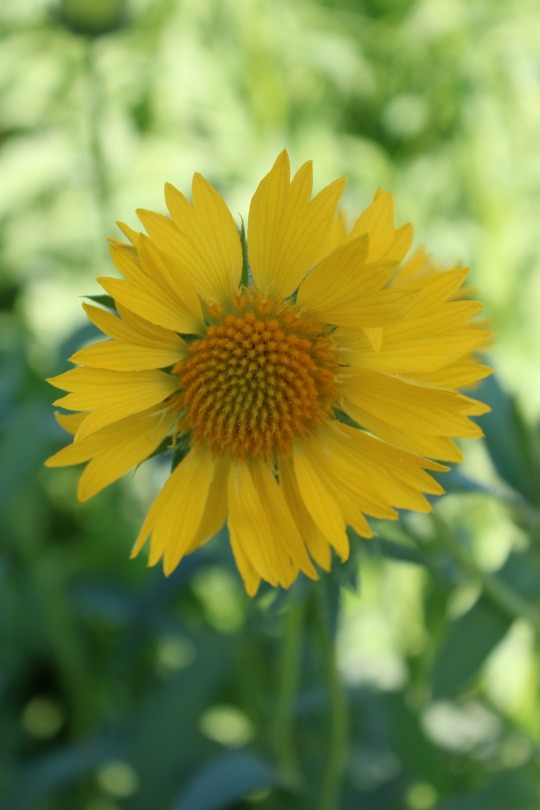
Golden Crownbeard (Verbesina Encelloides)
Toulouse, France
#photographers on tumblr#nature#flowers#yellow#floral#summer#flores#amarillo#verano#golden crownbeard#verbesina encelloides#gold weed#wild sunflower#vertical#original photographers#original photography#cowpen daisy#butter daisy#crown beard#american dogweed#south african daisy
168 notes
·
View notes
Photo

Golden Crownbeard AKA Cowpen Daisy #mv_floral . . . . #floweroftheday #flowerslovers #flowerpower #flowerporn #flowerstagram #instaflower #flowers #fleurs #floral #wp_flower #mothernature #floweroftheday #nature / on Instagram https://ift.tt/33iFQaT
0 notes
Photo
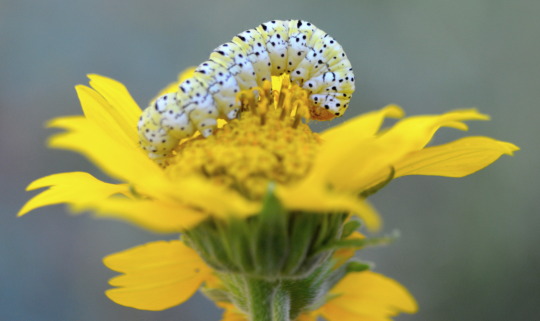
Gilded seedcropper moth cateripillar (Basilodes chrysopis) on golden crownbeard (Verbesina encelioides), Yavapai County, Arizona.
Please click for full view.
#photographers on tumblr#gilded seedcropper moth cateripillar#Basilodes chrysopis#golden crownbeard#Verbesina encelioides#Yavapai County#Arizona
56 notes
·
View notes
Photo

Past Photo Favorites - Loggerhead Shrike on a saltbush the yellow background is from a field of Golden Crownbeard flowers. #ScenesFromMyWalk #LoggerheadShrike #Shrike #ButcherBird #Carnivore #Birds #Bird #BirdPhotography #Birding #BirdingPhotography #Saltbush #PhotoByJeriRae (at Agua Fria, New Mexico) https://www.instagram.com/p/CoQwyVyrSnx/?igshid=NGJjMDIxMWI=
#scenesfrommywalk#loggerheadshrike#shrike#butcherbird#carnivore#birds#bird#birdphotography#birding#birdingphotography#saltbush#photobyjerirae
0 notes
Photo

Past Photo Favorites - Say’s Phoebe perched on discarded fencing - the yellow background is a field of golden crownbeard flowers. #PastPhotoFavorites #SaysPhoebes #Insectavore #FavoritePhoto #SaysPhoebe #Birds #Bird #BirdPhotography #Birding #BirdingPhotography #Naturalist #PhotoByJeriRae (at Agua Fria, New Mexico) https://www.instagram.com/p/CnxOsCkvmde/?igshid=NGJjMDIxMWI=
#pastphotofavorites#saysphoebes#insectavore#favoritephoto#saysphoebe#birds#bird#birdphotography#birding#birdingphotography#naturalist#photobyjerirae
0 notes